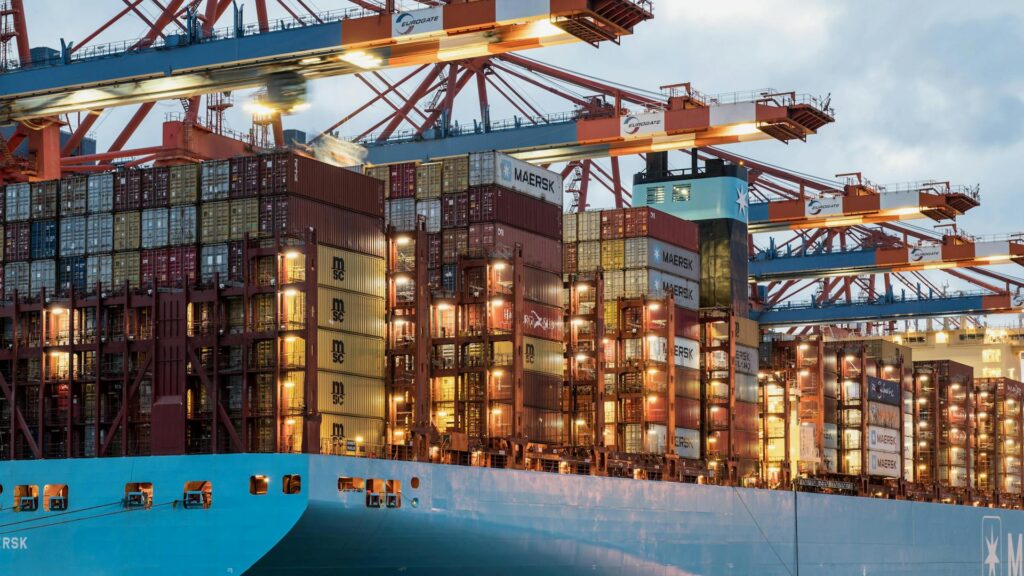
On the grand stage of the global tobacco consumption market, e-cigarettes, as a newly emerging alternative to traditional tobacco, have been rising in popularity in recent years. However, when it comes to the specific situation of shipping e-cigarettes from China to the Philippines, numerous difficulties have emerged one after another. Due to the special product attributes and extremely sensitive nature of e-cigarettes themselves, they have encountered one obstacle after another during the long journey of international trade transportation. Especially the customs clearance process for shipping e-cigarettes to the Philippines is extremely difficult, like an insurmountable barrier.
The Sensitive Nature of E-cigarettes
At first glance, e-cigarettes seem to be a “milder substitute” for traditional cigarettes, but in fact, their sensitivity far exceeds that of ordinary commodities. By analyzing their components, we can get a glimpse. E-cigarette liquid usually contains nicotine, propylene glycol, glycerol, and a variety of flavorings.
Among them, nicotine, as a highly addictive substance, poses potential health risks like the sword of Damocles hanging overhead, attracting extensive attention from all sectors. Many studies have conclusively pointed out that the hazards of long-term nicotine intake should not be underestimated. It can not only potentially trigger cardiovascular problems but also cause irreversible damage to the developing brains of adolescents.
Precisely because of these hidden dangers, e-cigarettes are closely monitored by regulatory authorities around the world. The process of shipping e-cigarettes to the Philippines is under all-round and seamless surveillance to strictly prevent their illegal entry into the Philippines and misuse.
Relevant Regulations and Management of E-cigarettes in the Philippines
The regulatory framework for e-cigarettes constructed by the Philippines is quite strict. The Republic Act No. 11900, “The Regulation of Vaping and Non-Nicotine Delivery Systems Act,” which came into effect on July 25, 2022, is like a tight net that comprehensively covers and regulates every aspect of e-cigarettes, including import, sales, packaging, distribution, use, and promotion.
Under the guidance of this act, the Department of Trade and Industry (DTI) has been designated as the leading implementing agency, with the Department of Health (DOH), the Food and Drug Administration (FDA), and other departments working together in concert.
Focusing on the import aspect, since June 2024, any e-cigarette products, whether manufactured locally for sale in the Philippines or directly imported from abroad, must obtain mandatory certification without exception and must strictly comply with the Philippine National Standards (PNS).
This national standard is like a precise ruler, setting strict requirements in multiple dimensions such as product safety and quality to ensure that every e-cigarette product entering the Philippine market will not cause accidental harm to users, such as fires or explosions.
In addition, the DTI has issued clear directives regarding product packaging labels and health warnings, stipulating that the relevant information must be clear and conspicuous and must fully include graphic health warnings.
At the same time, to protect minors from the temptation of e-cigarettes, the Philippines has set the minimum age for purchasing and selling e-cigarette products at 18 years old and has explicitly prohibited the sale and promotion of e-cigarettes within a 100-meter radius of places where minors frequently gather, such as schools and playgrounds, thus building a solid protective barrier for the growth environment of adolescents.
The Scarcity of Services for Shipping E-cigarettes to the Philippines
Considering the sensitive nature of e-cigarettes and the stringent regulations tailor-made by the Philippines, very few logistics companies in the industry are willing to step forward and undertake the business of shipping e-cigarettes from China to the Philippines.
International logistics transportation is like a complex transnational relay race, involving various thorny factors such as different national laws and regulations and customs policies.
For sensitive cargo like e-cigarettes, once logistics companies take on the job, it means they have to bear higher risks and pay more costly prices.
On the one hand, during the transportation of e-cigarettes to the Philippines, if there is the slightest mishap or violation, logistics companies are likely to face staggering fines and may even be drawn into legal disputes and bear corresponding legal liabilities.
On the other hand, to meet the complex certification and pre-customs clearance requirements of the Philippines, logistics companies must allocate more manpower and invest more time and energy to sort out and handle the mountain of relevant documents and procedures.
Under such circumstances, many logistics companies, after weighing the pros and cons, choose to stay away, directly resulting in the current scarcity of specialized logistics services for shipping e-cigarettes to the Philippines, which is almost non-existent.
The Difficulties in Customs Clearance after Shipping E-cigarettes to the Philippines
After going through many twists and turns and finally arriving in the Philippines, the e-cigarettes then face the real challenge of customs clearance, with difficulties coming one after another.
First of all, the Philippine customs authorities adopt an almost 苛刻的严谨态度 towards the document review of e-cigarette products. Importers need to be extremely vigilant at this stage. They not only have to submit routine logistics clearance documents such as packing lists, commercial invoices, bills of lading/air waybills in an orderly manner but also need to provide highly targeted specific documents such as production batch details and valid Philippine Standards (PS) licenses.
If any documents are missing or do not meet the strict requirements of the Philippine customs, the goods will immediately fall into a detention predicament. In severe cases, they may even be unceremoniously returned, rendering all previous efforts in vain.
Secondly, the product certification stage is also full of pitfalls. Even if some e-cigarette products have successfully passed relevant quality inspections and met domestic standards in China, it is by no means easy to successfully enter the Philippine market and obtain the mandatory certification.
The certification standards for e-cigarettes in the Philippines are extremely detailed and strict. From the precise proportion of product components to every design detail of the packaging label, any slight deviation in a single tiny aspect may trigger a certification failure alarm, thus preventing smooth customs clearance.
What’s more worrying is that the 海关还经常对货物进行随机抽检,which undoubtedly adds more uncertainty to the customs clearance process. Once a random inspection reveals that the actual situation of the product does not match the declared content or there are potential quality problems with the product, then the customs clearance path will become even more thorny and difficult to navigate.
An Analysis of the Reasons for the Philippines’ Stringent Control over Shipping E-cigarettes to the Philippines
From the perspective of the Philippines itself, its strict management and high-difficulty customs clearance barriers for shipping e-cigarettes to the Philippines are not unfounded. There are deep-seated and multi-faceted considerations behind them.
From the macroscopic perspective of public health, the Philippine government has been making every effort to protect its people from the potential hazards of e-cigarettes, especially focusing on preventing adolescents from coming into contact with and using e-cigarettes. By implementing strict customs clearance policies, it is like building a solid fortress at the national gate, enabling it to effectively control the inflow and quality of e-cigarettes into the Philippines from the 源头上 and minimize the influx of illegal e-cigarette products on the Philippine market.
From the microscopic perspective of market regulation, through complex and cumbersome certification and customs clearance procedures, the Philippines can sift out high-quality e-cigarette products that truly meet its national standards and law-abiding operating enterprises, safeguarding the healthy and orderly development of the e-cigarette 市场 and effectively avoiding a series of thorny problems such as consumer rights and interests being damaged due to a chaotic market.
At the same time, such strict control also provides a certain degree of protection for related domestic industries in the Philippines, helping them to thrive in a standardized market ecological environment and enhancing the competitiveness and risk resistance of local industries.
In conclusion, the process of shipping e-cigarettes from China to the Philippines, whether in the early stage of seeking reliable logistics services for shipping e-cigarettes to the Philippines or in the later stage of actual customs clearance after the goods arrive in the Philippines, is like trudging along a thorny path, facing continuous challenges.
Tracing back to the source, these challenges stem from the sensitive nature of e-cigarettes themselves and the strict management regulations formulated by the Philippines to safeguard its national interests and the health of its people.
For those enterprises and individuals with ambitious plans to engage in the trade of shipping e-cigarettes from China to the Philippines, a thorough understanding of these complex situations and making comprehensive preparations in advance have undoubtedly become the only way to cope with customs clearance difficulties and ensure a smooth trade path.





